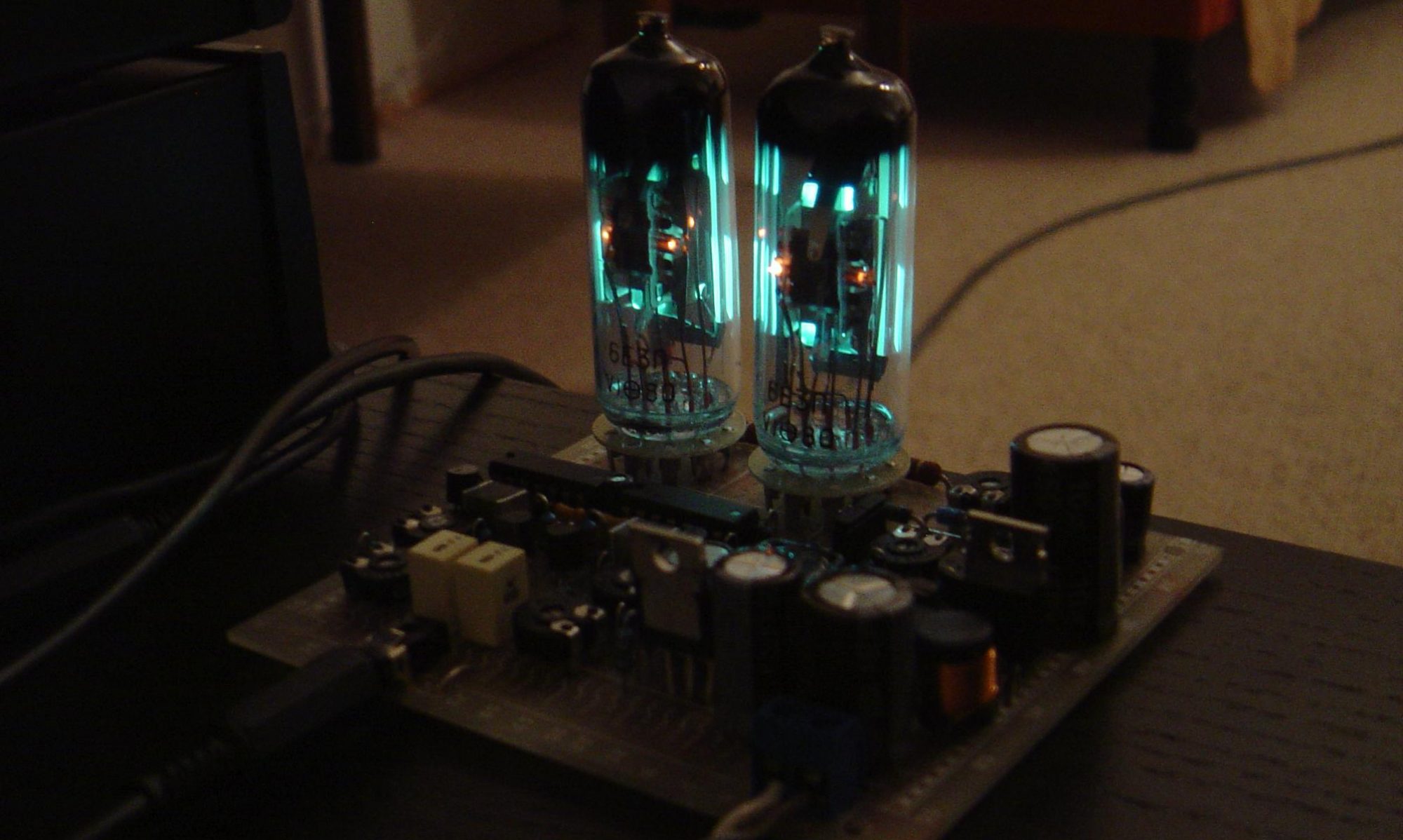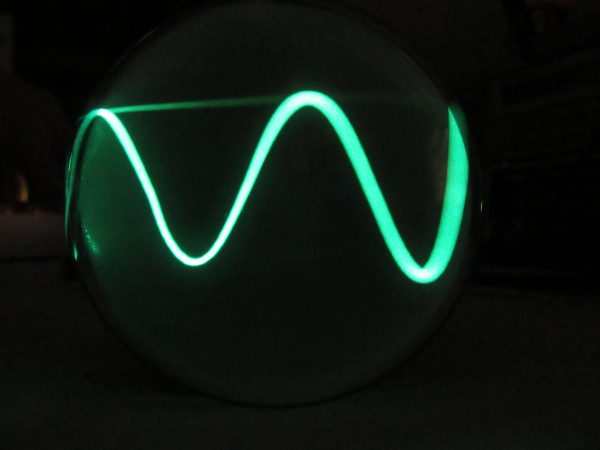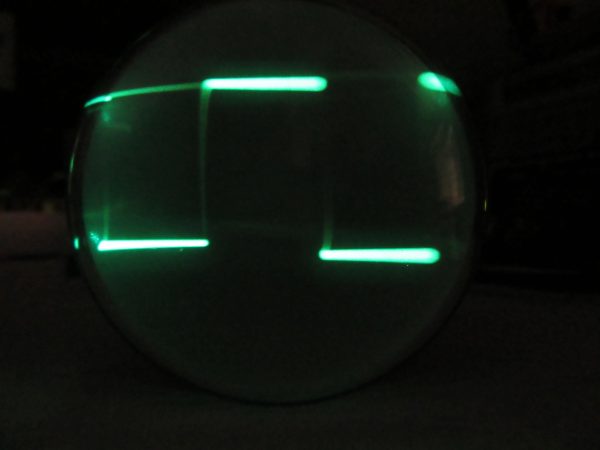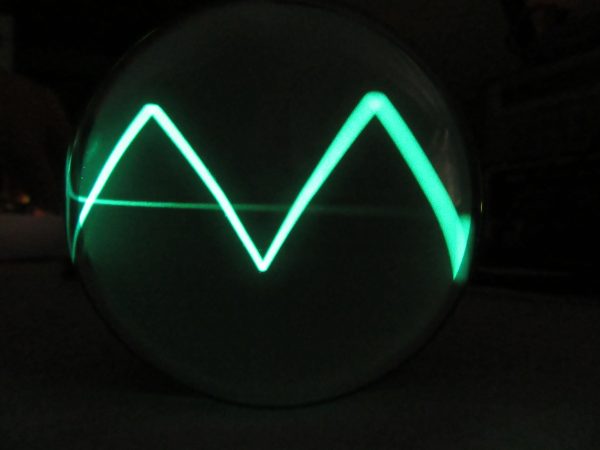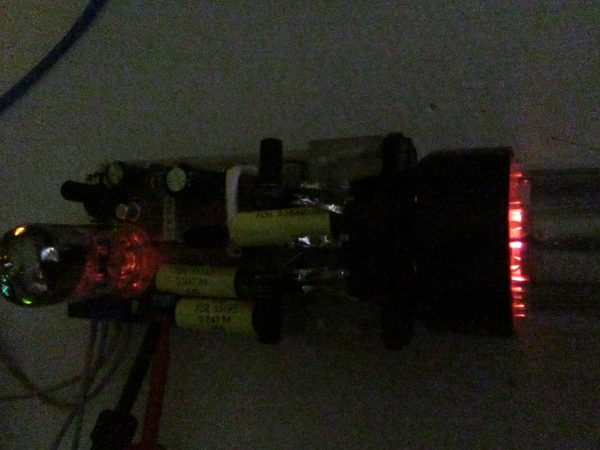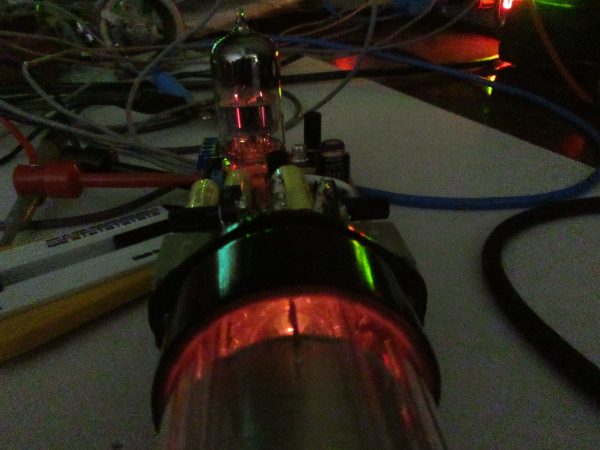First, I have to give a quick heads up: this post is a little longer than usual but that’s how it is with a hobby. You have a plan, you learn new things in the middle of it, and you expand a project piece by piece. A hobby is not about efficiency, but about making something “beautiful” and being satisfied at the end. So it doesn’t take long to add a few extra weekends of tinkering to something that should only take a few hours…
From the planned test of the O7S1 had resulted in the course of the time also these points:
- Sawtooth generator, test setup and simulation with PSpice
- Amplifier for X- and Y-deflection with double triode 6N2P
- Overall circuit for a mini oscilloscope
But now let’s get started with the article.
Recently I rebuilt an old oscilloscope “Picoscope”. Among some other things the cathode ray tube was missing. In the original device a B7S1 from VEB Funkwerk Erfurt (part of RFT) is installed. The designators of such tubes are usually composed like in this case: A letter followed by the screen diagonal and the more exact designation. In this case, B7S1 probably stands for picture tube, 7cm diagonal, system 1. After a short internet search for this spare part, I didn’t find a B7S1, but an O7S1 for a relatively low price. A further search in my tube codex from 1948

and at radiomuseum.org revealed that an O7S1 is a pre-1945 Telefunken picture tube model. It has the same heater voltage and apparently the same socket circuitry as a B7S1. Further data on the O7S1 was not available. Unfortunately, my “Röhren-Taschenbuch” from 1958 from the “Fachbuchverlag Leipzig” does not contain the B7S1 yet.

However, the similarity between the two tubes led me to believe that the B7S1 from RFT from the 50s is a compatible replica of the Telefunken tube from the 40s. So I bought it without further ado and after a few days the tube arrived undamaged. The first sight was good. Externally and mechanically everything was apparently in order, the contacts had not been in a socket for ages. This can be seen quite easily with a magnifying glass on corroded but not scratched contacts. Also the Telefunken logo and the designation are still held diagonally against the light, quite good to see. The silver inscription O7S1 is applied from modern times with one of these special pens.

On the base itself was the original imprint V II / RÖ 19. It occurred to me briefly whether it might not be Roman seven, but V Roman two or V2. Probably, however, it means assembly 7 / tube 19. If anyone knows which device it could be, I absolutely ask for a message.
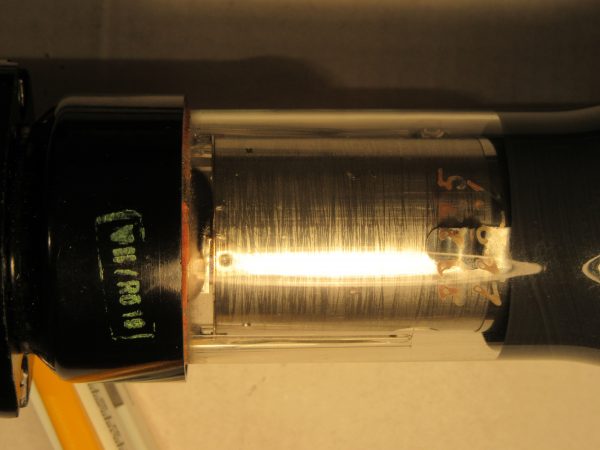
Since I still have an original Picoscope EO1/7, I could put the tube in there and do a quick test. But everything remained dark. Nevertheless, I did not give the online dealer a bad rating at first, but set up a test circuit. Very helpful was the page of Burkhard Kainka, on which beside many basics as well as small and large tinkering projects also a test circuit for a mini-oscilloscope is published. At this point a big thank you from me to the operator of the site for the work to publish all this.
Back to the test circuit: During the setup it quickly became clear that the sockets of the two tubes B7S1 and O7S1 are rotated by 180° and after a short time I could see that the tube basically works.

What followed was a few weekends of tinkering. First I found out that grid 1 has no function anymore. This means that direct brightness control is no longer possible. This is not so much a problem, because you can also regulate the brightness with the anode voltage. However, it may also affect the focus, and probably the tube will no longer have the performance it had in its original state. Nevertheless I tried to develop the best possible circuit. Basis was as described above the test circuit of Burkhard Kainka.
First I tried to improve the X-deflection. Ideal is a sawtooth generator, which has a linear voltage rise and very fast fall. However, the original flip-flop circuit with a glow lamp gives an exponential voltage waveform. You can see this very clearly in the oscillogram in the article by Burkhard Kainka, the curve is compressed on the right. My idea should be as simple but a bit better and finally I experimented with a sawtooth generator with a unijunction transistor (UJT), whose basic circuit is quite simple.
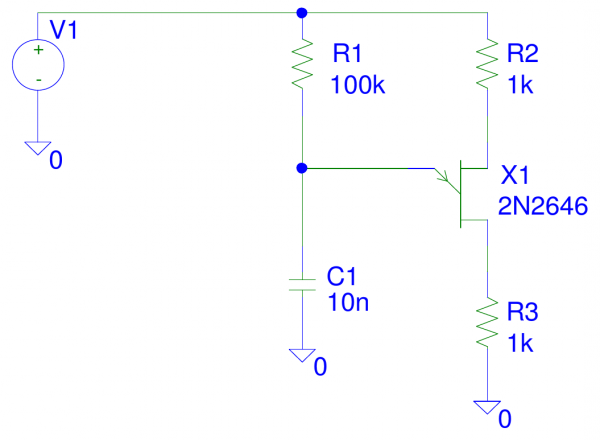
At the emitter a sawtooth can be taken, which is already a bit more linear than a toggle circuit with glow lamps. Of course it is again the charge curve of a capacitor or an e-function. But here we are only in the lower range. A simulation with PSpice shows the expected, a not quite linear increase.
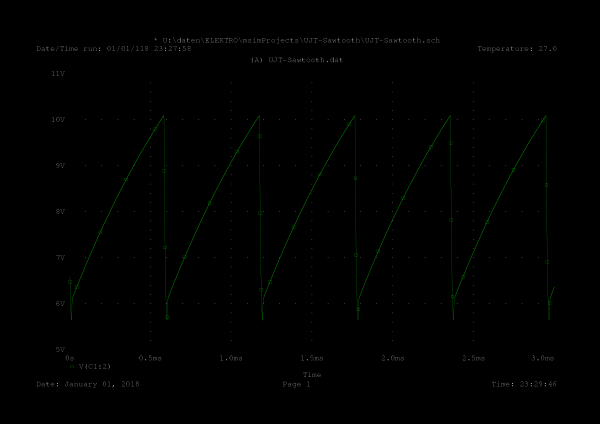
Since the frequency should be variable, I have inserted a resistor into the circuit, which is changed during the simulation via a parameter. With PSpice this is done by placing a global parameter on the worksheet, in this case V_POT. Several simulations are then run and this parameter is changed. I have chosen steps of 0.2 between zero and one. Via C2 and R4 the load of the generator is represented.
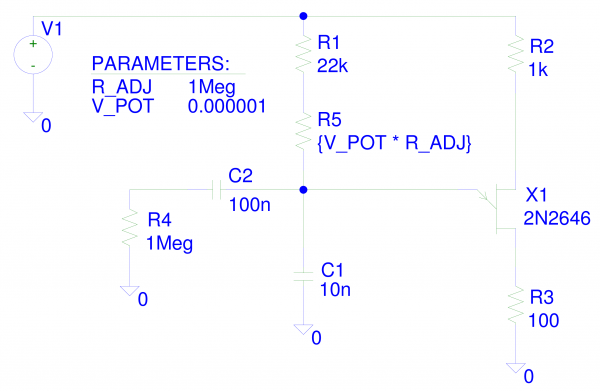
Again, the simulation did not reveal any surprises. However, it was quite difficult to get the convergence problems under control with PSpice. This is especially problematic when simulating oscillators and one has to experiment with some simulation parameters until everything runs error-free to the end.
The frequency is adjustable within wide limits, we now have an excellent sawtooth generator for the X-deflection.
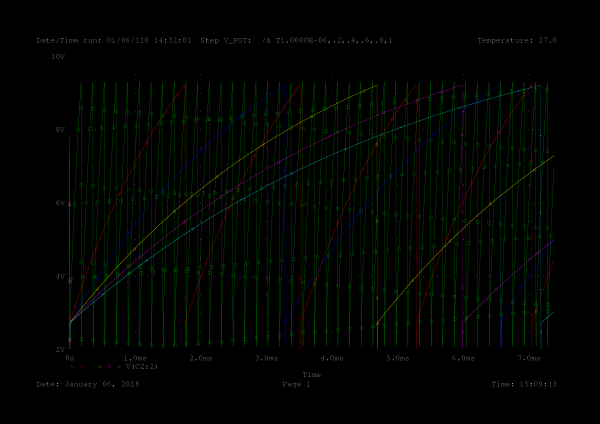
And another clip of the first half millisecond.

At the end I made an oscillogram of the built up sawtooth generator at minimum frequency, so it should look like the green curve. And voila it looks pretty similar. The amplitude is a bit higher and the frequency is a bit lower. I blame this on the component tolerances.
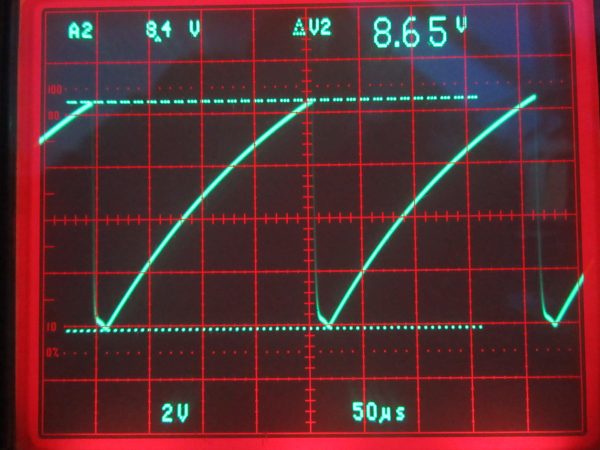
The sensitivity of the O7S1 is rather moderate. The exact value is not known to me. My tests showed about 50V/cm for the X- and 40V/cm for the Y-deflection. This left the next task to be solved, to amplify the signal by a factor of 25 to 30. True to style I chose a triode. The high voltage for the picture tube is available anyway, so the use of another tube does not mean a big additional effort. As a triode with high amplification an ECC83 is a good choice. Because of the high price of the ECC83 I chose the very similar 6N2P or 6H2П, which is still manufactured in Russia. As circuit a standard amplifier circuit for triodes is used. Here is the section of the overall circuit diagram of the mini-oscilloscope.
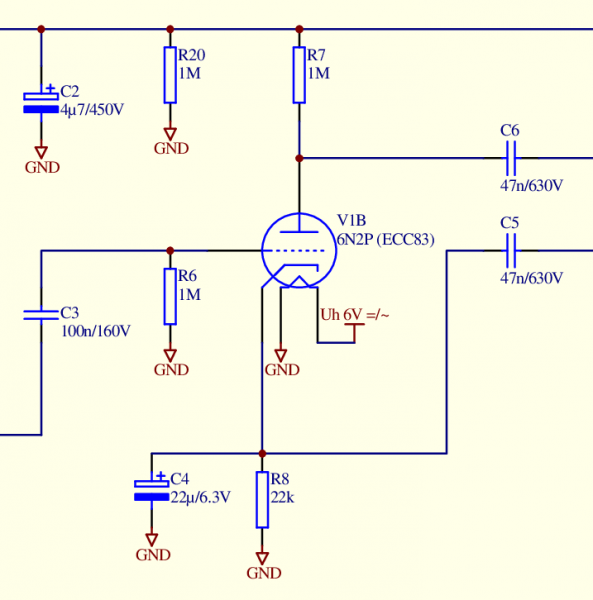
The second system of the double triode was used for the Y-amplifier, which is constructed identically to the X-amplifier. Some of the deflection plates must have a higher potential than the anode to be able to shift the X and Y origin over the whole visible range. This function is realized by some voltage dividers and potentiometers (R9 to R19 and P2/P3). With potentiometer P4 the focus is set. With this the mini-oscilloscope worked reasonably well and I was satisfied.
Finally the complete schematic, a photo gallery and a short video.
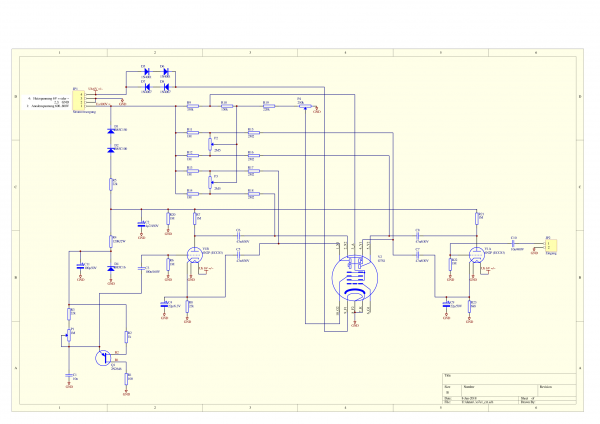
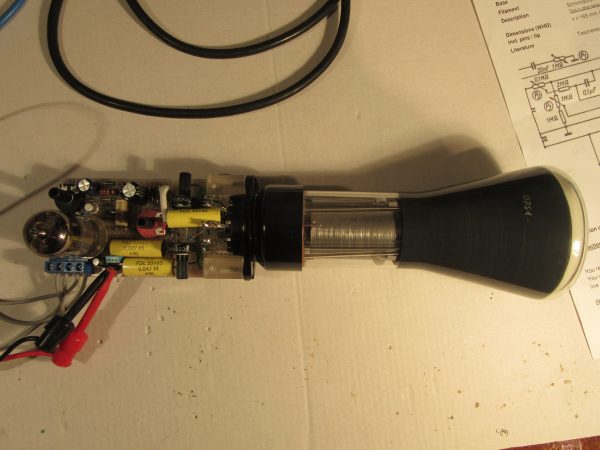
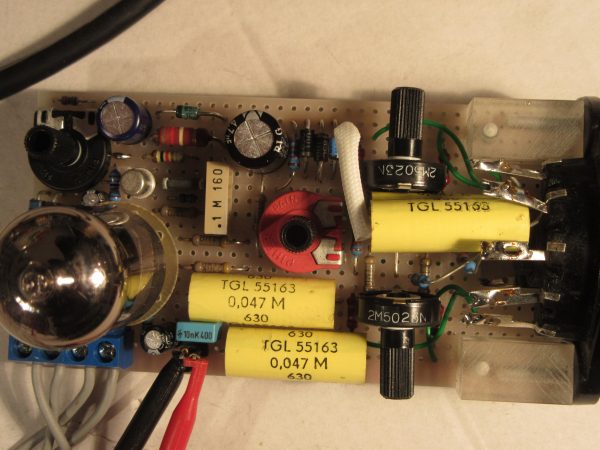

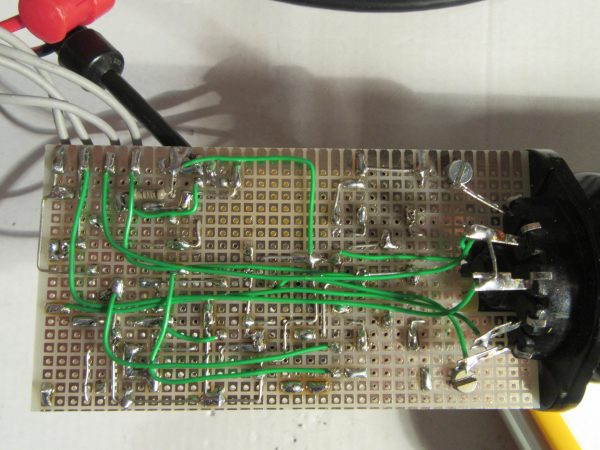
Sine, square and triangle signals approx. 2kHz from my function generator.
The tubes glow.
This is what the whole thing looks like live, fed from the function generator.
